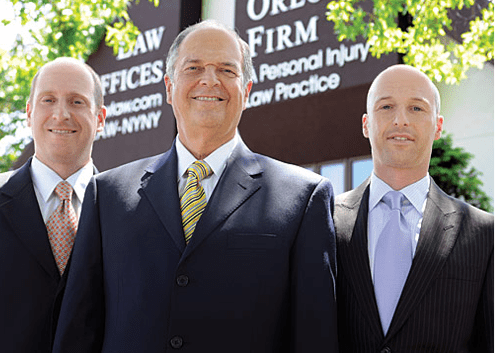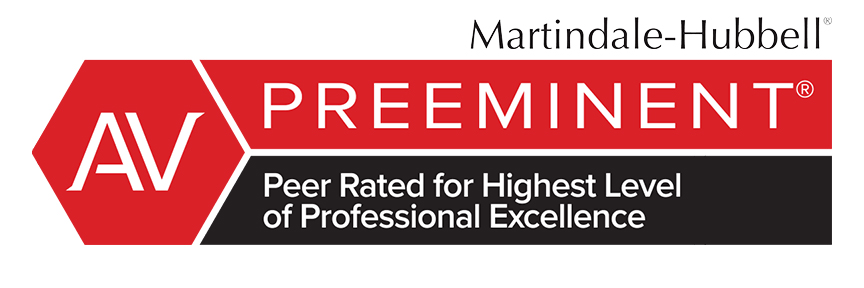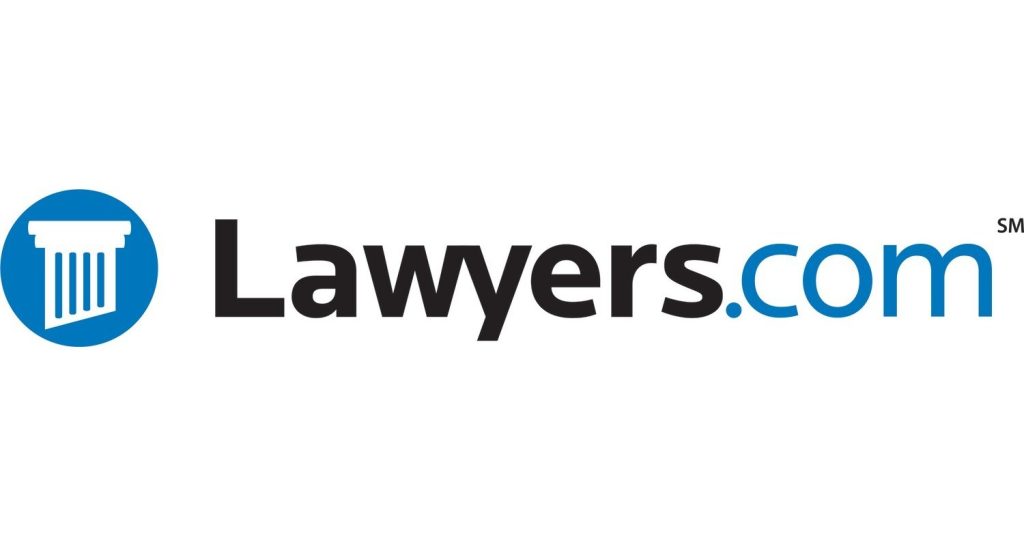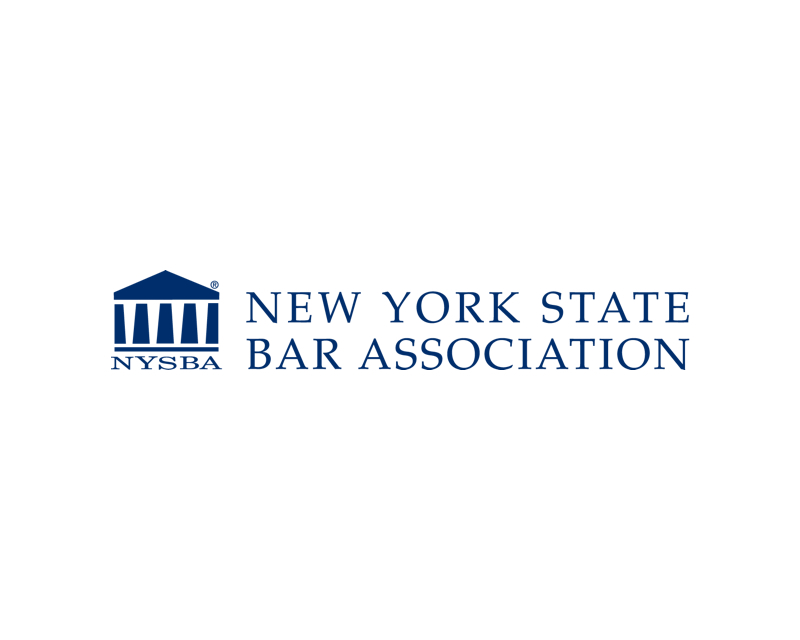What is Actual Versus Constructive Notice?
Quick Answer: In legal terms, actual notice means someone was directly informed of a condition or issue, while constructive notice means they should have known about it through reasonable care—even if they weren’t directly told. This distinction is often key in premises liability and personal injury cases.
Understanding Actual Versus Constructive Notice: A Comprehensive Overview
Understanding Actual Versus Constructive Notice is crucial for anyone navigating personal injury claims in New York City. When it comes to premises liability cases, the concept of “notice” plays a pivotal role in determining whether a property owner or manager can be held liable for injuries sustained on their property. Essentially, “notice” refers to the awareness of a hazardous condition. In legal terms, notice can be categorized into two types: Actual Notice and Constructive Notice. Each has distinct implications for personal injury cases, especially in a bustling urban environment like New York City.
Actual Notice occurs when a property owner or responsible party is directly aware of a dangerous condition. This could happen through direct observation, complaints from tenants or visitors, or any other form of direct communication. For example, if a tenant informs a landlord about a broken staircase, the landlord has actual notice of the hazard. This type of notice is straightforward because it involves clear evidence that the responsible party knew about the danger.
On the other hand, Constructive Notice is a bit more complex. It refers to situations where a property owner should have known about the hazardous condition, even if they weren’t directly informed. In other words, the condition was present long enough that a reasonable person managing the property would have discovered it through regular maintenance or inspections. For instance, if a spill in a grocery store aisle remains unaddressed for several hours, the store could be said to have constructive notice of the hazard. This is because the condition was visible and should have been discovered through routine checks.
Understanding these concepts is vital for New Yorkers involved in personal injury cases because the type of notice can significantly impact the outcome of a lawsuit. The distinction between actual and constructive notice often determines whether a property owner can be held liable for injuries. If a plaintiff can demonstrate that the property owner had notice (actual or constructive) of the dangerous condition and failed to address it, they are more likely to succeed in their claim.
In a city as dynamic as New York, where properties range from residential buildings to commercial spaces, understanding the nuances of actual versus constructive notice can provide clarity and direction for individuals seeking justice after an injury. If you believe your injury resulted from a property owner’s negligence, understanding these legal concepts is the first step toward protecting your rights. For personalized assistance, contact The Orlow Firm at (646) 647-3398.
Key Differences Between Actual and Constructive Notice
In personal injury law, particularly in premises liability cases in New York City, understanding the distinction between actual notice and constructive notice is crucial. These concepts play a significant role in determining the liability of property owners or managers when an injury occurs on their premises. Here’s a breakdown of the key differences:
- Definition of Actual Notice: Actual notice refers to a situation where the property owner or responsible party is explicitly aware of a dangerous condition on their property. This awareness can arise through direct communication or observation. For example, if a tenant informs a landlord about a broken stair, the landlord has actual notice of the hazard.
- Definition of Constructive Notice: Constructive notice, on the other hand, implies that the property owner should have known about the dangerous condition, even if they did not have direct knowledge. This is based on the premise that a reasonable person maintaining the property would have discovered the issue through routine inspections and maintenance. An example would be a spill in a grocery store aisle that has been there long enough that it should have been noticed by staff.
- Burden of Proof: The burden of proof varies significantly between the two types of notice. With actual notice, the injured party must demonstrate that the property owner was informed of the hazard or observed it themselves. In contrast, proving constructive notice requires showing that the dangerous condition existed for a sufficient period, allowing the owner to discover and rectify it through reasonable diligence.
- Impact on Liability: Actual notice often provides a clearer path to establishing liability because it directly implicates the property owner’s awareness of the hazard. Constructive notice requires more circumstantial evidence, such as maintenance logs or witness testimonies, to establish that the owner should have known about the danger.
- Examples in NYC Context: In New York City, where properties are densely packed and frequently used, both actual and constructive notice can arise in various scenarios. A classic example of actual notice might be a tenant notifying a landlord of a leaking ceiling. Constructive notice could involve a landlord failing to repair a sidewalk crack that has existed for several months, posing a tripping hazard.
Understanding these differences can significantly impact the outcome of a premises liability case. If you or a loved one has been injured due to a property owner’s negligence regarding actual or constructive notice, The Orlow Firm can help assess your situation. Contact us at (646) 647-3398 for experienced legal guidance.
How Actual Notice Works in New York City
In the context of personal injury law in New York City, actual notice plays a crucial role in determining liability, particularly in premises liability cases. Actual notice refers to a situation where a property owner or responsible party is directly aware of a hazardous condition on their property. This awareness can be through direct communication, observation, or reports. Here’s how actual notice functions in NYC:
Direct Communication: This occurs when someone informs the property owner or manager about a dangerous condition. For instance, if a tenant reports a broken stair to a landlord, the landlord has actual notice of the hazard.
Observation: If a property owner personally observes a dangerous condition, they have actual notice. For example, if a store manager sees a spill on the floor but fails to clean it up or put up a warning sign, they are considered to have actual notice of the hazard.
Reports and Records: Sometimes, actual notice can be established through documentation. Maintenance logs, complaint records, or inspection reports can serve as evidence that the property owner was aware of the issue.
In New York City, proving actual notice can significantly impact the outcome of a personal injury case. If an injured party can demonstrate that the property owner had actual notice of a dangerous condition and failed to address it, this can establish the owner’s negligence, making them liable for any resulting injuries.
To illustrate, consider a scenario where a grocery store employee informs the store manager about a leaking refrigerator causing a slippery floor. If the manager does not take action to fix the leak or warn customers, and someone slips and falls as a result, the store could be held liable because they had actual notice of the hazard.
Understanding how actual notice works is essential for anyone involved in a personal injury case in NYC. If you believe your injury was due to a property owner’s negligence, having evidence of actual notice can strengthen your case. For personalized assistance, contact The Orlow Firm at (646) 647-3398 to speak with experienced personal injury attorneys who can help you navigate these complexities.
The Role of Constructive Notice in NYC Premises Liability Cases
In New York City, premises liability cases often hinge on the concept of constructive notice. This legal principle plays a pivotal role in determining whether a property owner can be held liable for injuries sustained on their property. Constructive notice refers to the idea that a property owner should have known about a dangerous condition, even if they were not directly informed of it. This differs from actual notice, where the owner is explicitly aware of the hazard.
In the bustling environment of New York City, property owners are expected to maintain a higher level of vigilance. Given the dense population and the constant use of public and private spaces, the law requires them to regularly inspect and maintain their properties to ensure safety. Constructive notice is applied when the dangerous condition has existed for such a length of time that the property owner should have discovered and rectified it through reasonable diligence.
- Regular Inspections: Property owners are expected to conduct regular inspections. Failing to do so could result in them being held liable under constructive notice if a hazard is present for an extended period.
- Obvious Hazards: If a hazard is visible and obvious, such as a large crack in the sidewalk or a broken handrail, and it remains unaddressed, constructive notice may be established.
- Documentation and Reports: Records of previous incidents or complaints about a specific hazard can strengthen a claim of constructive notice. If tenants or visitors have previously reported the issue, the owner is expected to take corrective action.
Consider a scenario where a tenant in a New York City apartment building trips over a loose tile in the lobby. If the tile has been loose for several weeks and other tenants have made complaints about it, the building owner may be deemed to have constructive notice. They should have taken steps to repair the tile, and their failure to do so could make them liable for the tenant’s injuries.
Understanding the role of constructive notice in premises liability cases is crucial for anyone injured on someone else’s property in NYC. It underscores the importance of property maintenance and the legal obligations owners have to prevent accidents. If you believe your injury was due to a property owner’s negligence under constructive notice, consulting with an experienced personal injury attorney can help you navigate these complex legal waters.
If you have questions or need assistance with a premises liability case, contact The Orlow Firm at (646) 647-3398 for compassionate and professional legal guidance.
Common Scenarios Involving Actual and Constructive Notice in NYC
In New York City, understanding the nuances of actual versus constructive notice is crucial for premises liability cases. These legal concepts often determine whether a property owner is liable for injuries sustained on their property. Let’s explore some common scenarios where actual and constructive notice come into play.
- Slip and Fall on Wet Floors: Suppose a grocery store employee spills a liquid and fails to clean it up promptly. If a customer immediately slips and falls, the store may have actual notice of the hazard if the employee witnessed the spill and did nothing. Conversely, if the spill remains for an extended period without being addressed, the store could be deemed to have constructive notice because the hazard was present long enough that they should have been aware of it.
- Broken Sidewalks: In NYC, property owners are responsible for maintaining sidewalks adjacent to their premises. If a sidewalk is damaged and a person trips and falls, proving actual notice could involve showing that the property owner was directly informed about the damage. Constructive notice might be claimed if the defect was visible and present for a significant duration, suggesting the owner should have known and repaired it.
- Debris on Stairs: Consider an apartment building where debris accumulates on the stairs. If tenants have previously reported this issue to the landlord, this constitutes actual notice. However, if the debris remains for a prolonged period without reports, the landlord might still be liable under constructive notice, as regular inspections should have identified the hazard.
- Defective Lighting: Poor lighting in stairwells or hallways can lead to accidents. If a tenant submits a maintenance request about a broken light and the landlord does not act, this is actual notice. If no reports are made but the light remains broken for weeks, constructive notice could apply, assuming regular checks would have revealed the issue.
These scenarios illustrate how actual and constructive notice are applied in real-life situations in NYC. Successfully proving notice can be complex, requiring diligent evidence gathering and a strong legal strategy. If you or a loved one has been injured due to unsafe conditions, understanding your rights is vital. For knowledgeable legal assistance, contact The Orlow Firm at (646) 647-3398 today.
Legal Implications of Actual Versus Constructive Notice in New York
In New York, the legal implications of actual versus constructive notice are significant, particularly in premises liability cases, such as slip and fall accidents. These concepts determine whether a property owner or manager can be held liable for injuries that occur on their property. Understanding these distinctions can be crucial in establishing a successful personal injury claim.
Actual Notice: This occurs when a property owner or manager is directly aware of a hazardous condition. For example, if a tenant reports a broken stair to a landlord, the landlord has actual notice of the defect. In such cases, the property owner is expected to take reasonable steps to address and rectify the issue. Failure to do so can result in liability if someone is injured due to the hazard.
Constructive Notice: Unlike actual notice, constructive notice does not involve direct awareness. Instead, it is based on the premise that the property owner should have known about the dangerous condition through reasonable diligence. For instance, if a spill in a grocery store aisle remains uncleaned for several hours, the store may be deemed to have constructive notice, as a reasonable inspection would have identified the hazard. In New York, proving constructive notice often requires demonstrating that the condition was visible and apparent and existed long enough for the owner to discover and remedy it.
In NYC, the courts consider several factors when evaluating notice in premises liability cases:
- Duration: How long the hazardous condition existed before the accident.
- Visibility: Whether the condition was obvious to someone conducting a reasonable inspection.
- Regular Inspections: Whether the property owner had a routine inspection process in place.
- Previous Complaints: Prior reports or complaints about the same or similar conditions.
Understanding the legal implications of notice is essential for both plaintiffs and defendants in personal injury cases. Plaintiffs must establish that the property owner had actual or constructive notice of the hazard to hold them liable. Conversely, property owners can defend against claims by demonstrating a lack of notice or that reasonable steps were taken to address the hazard.
If you or a loved one has been injured due to a hazardous condition in New York City, understanding how actual and constructive notice applies to your case is crucial. The Orlow Firm is ready to provide the guidance and representation you need. Contact us at (646) 647-3398 for a free consultation.
Proving Actual Versus Constructive Notice in a Personal Injury Case
In personal injury cases, especially in New York City, proving whether a property owner had actual or constructive notice of a hazardous condition is crucial. This distinction can significantly impact the outcome of a case, particularly in premises liability claims like slip and fall accidents.
Actual Notice refers to a situation where the property owner or responsible party is directly aware of the hazardous condition. This can be established through:
- Direct Communication: If a tenant or visitor informs the property owner about the issue verbally or in writing, this can serve as evidence of actual notice.
- Incident Reports: Documentation of previous accidents or complaints related to the same hazard can demonstrate that the owner was aware of the problem.
- Inspection Records: Regular maintenance checks that identified the hazard can also prove actual notice.
Constructive Notice, on the other hand, implies that the property owner should have known about the hazard, even if they were not directly informed. This can be proven by demonstrating that:
- The Condition Existed for a Significant Time: If the dangerous condition was present long enough that a reasonable property owner would have discovered and addressed it, constructive notice may be established.
- Visible and Apparent Conditions: The hazard was obvious enough that it should have been noticed during routine inspections or by anyone frequently on the premises.
- Standard Maintenance Procedures: A lack of regular maintenance or inspection processes can indicate negligence, supporting a claim of constructive notice.
Proving either type of notice requires thorough evidence gathering. This might include photographs of the hazard, witness testimonies, maintenance logs, and expert analysis. In New York City, where properties are densely packed and frequently used, establishing notice is often a pivotal part of a personal injury lawsuit.
Whether you’re dealing with actual or constructive notice, understanding these concepts and how they apply to your case can be complex. If you or a loved one has been injured due to a property owner’s negligence, it’s essential to consult with experienced legal professionals who can guide you through the process. At The Orlow Firm, our dedicated attorneys are here to help. Contact us at (646) 647-3398 for a consultation to discuss your situation and explore your legal options.
Why Actual Versus Constructive Notice Matters in Slip and Fall Accidents
When it comes to slip and fall accidents in New York City, understanding the difference between actual notice and constructive notice is crucial for building a strong personal injury case. These two legal concepts determine whether a property owner or occupier can be held liable for injuries sustained on their premises. Let’s explore why these concepts are particularly significant in slip and fall cases.
In a slip and fall accident, demonstrating notice is a key element in proving liability. Here’s why the distinction between actual and constructive notice matters:
- Actual Notice: This occurs when the property owner or occupier was directly aware of the hazardous condition that caused the slip and fall. For instance, if a store manager was informed about a spill but failed to clean it up in a timely manner, they have actual notice. In such cases, proving liability can be more straightforward because the property owner had explicit knowledge of the danger.
- Constructive Notice: This is applicable when the property owner or occupier should have known about the hazardous condition through reasonable diligence. For example, if a dangerous condition, like a broken step, existed for a significant period, it could be argued that the property owner should have discovered and remedied it. Constructive notice is often harder to prove, requiring evidence that the condition was visible and apparent long enough that the owner should have taken action.
In New York City, where properties are densely packed and foot traffic is heavy, slip and fall accidents are common. Proving whether a property owner had actual or constructive notice of a dangerous condition can greatly influence the outcome of a claim. Successful cases often hinge on the ability to gather convincing evidence, such as:
- Witness Testimonies: Statements from individuals who saw the hazardous condition or were aware of the property owner’s knowledge can be pivotal.
- Surveillance Footage: Video evidence showing the duration of the hazard or the property owner’s response can be compelling.
- Maintenance Records: Documentation of regular inspections or lack thereof can support claims of constructive notice.
For slip and fall victims, understanding these nuances can mean the difference between a successful claim and a denied one. If you or a loved one has been involved in a slip and fall accident, it’s important to consult with experienced personal injury attorneys who can help navigate these complex legal waters. The Orlow Firm is dedicated to assisting clients in NYC with claims involving actual and constructive notice. For personalized assistance, reach out to us at (646) 647-3398.
Challenges in Establishing Constructive Notice in New York Courts
Establishing constructive notice in New York courts can present significant challenges for plaintiffs in personal injury cases. Constructive notice refers to the legal concept where a property owner should have known about a hazardous condition on their property, even if they did not have actual knowledge of it. This means that the owner could be held liable if the dangerous condition was present long enough that they should have discovered it through reasonable care.
Here are some key challenges involved in proving constructive notice in New York courts:
- Timeframe of the Hazard: One of the primary challenges is demonstrating that the hazardous condition existed for a sufficient period. Plaintiffs must provide evidence that the property owner had enough time to discover and rectify the issue. For instance, if a spill caused a slip and fall, showing that the spill had been present long enough for the property owner to take action is crucial.
- Evidence Collection: Gathering appropriate evidence can be difficult. Plaintiffs often need to rely on surveillance footage, maintenance logs, or eyewitness testimony to establish the duration of the hazardous condition. In many cases, this evidence may not be readily available or may not clearly show the timeframe needed to prove constructive notice.
- Standard of Care: The courts will evaluate whether the property owner exercised reasonable care in maintaining the premises. This involves assessing if regular inspections were conducted and whether the owner had protocols in place to identify and address hazards. Plaintiffs must prove that the property owner failed to meet these standards, which can be subjective and open to interpretation.
- Defendant’s Defense: Property owners often argue that they had a reasonable system in place for inspecting and maintaining their premises, which can complicate the plaintiff’s case. They may present evidence of regular inspections or argue that the hazard appeared too suddenly to have been discovered in time, making it difficult for plaintiffs to establish constructive notice.
- Inconsistent Witness Testimonies: Witnesses may provide varying accounts of the conditions at the time of the incident, which can create doubt about the presence or duration of the hazard. Inconsistencies in testimonies can undermine the plaintiff’s case, making it harder to establish constructive notice.
Understanding these challenges is essential for anyone pursuing a personal injury claim involving constructive notice in New York City. If you or a loved one has been injured due to a property owner’s negligence, consulting with experienced personal injury attorneys can provide guidance and support. The Orlow Firm is here to help. For experienced legal assistance, contact us at (646) 647-3398.
How The Orlow Firm Can Assist With Actual Versus Constructive Notice Claims
When it comes to personal injury cases involving actual versus constructive notice, the complexity of proving these concepts can be daunting. At The Orlow Firm, we understand the intricacies of New York City’s legal landscape and are dedicated to helping you navigate through the challenges of your personal injury claim. Here’s how we can assist:
- Expert Legal Evaluation: Our team will thoroughly assess your case to determine whether actual or constructive notice applies. Understanding the nuances between these two types of notice is crucial in establishing liability in personal injury cases, particularly in premises liability scenarios.
- Gathering Evidence: Proving actual notice requires demonstrating that the property owner was directly aware of the hazardous condition. For constructive notice, we must show that the condition existed long enough that the owner should have been aware. Our attorneys will meticulously gather evidence, such as maintenance records, surveillance footage, witness statements, and expert testimonies, to build a strong case.
- Strategic Case Building: Based on the evidence collected, we will develop a tailored legal strategy to advocate for your rights. We aim to demonstrate the property owner’s negligence effectively, whether they had actual notice of the danger or should have known about it through constructive notice.
- Negotiation and Litigation: We are skilled negotiators and will strive to reach a fair settlement with the responsible parties. However, if the case goes to court, our experienced litigators are prepared to represent you zealously, presenting a compelling argument to secure the compensation you may be entitled to.
- Compassionate Support: At The Orlow Firm, we prioritize your well-being and are committed to providing compassionate support throughout the legal process. We understand the emotional and physical toll personal injuries can take and are here to guide you every step of the way.
If you believe your injury case involves issues of actual or constructive notice, don’t hesitate to reach out to The Orlow Firm. Our dedicated attorneys are ready to help you understand your rights and pursue the justice you deserve. Contact us today at (646) 647-3398 for a free consultation.
Protecting Your Rights: What to Do if You’re Affected by Notice Issues
If you believe you have been affected by notice issues in a personal injury case, it’s crucial to take proactive steps to protect your rights. Understanding whether your case involves actual or constructive notice can significantly impact the outcome of your claim. Here’s what you should do if you’re dealing with notice issues in New York City:
- Document Everything: Gather as much evidence as possible. This includes photographs of the accident scene, witness statements, and any communication with property owners or managers. Detailed documentation can help establish whether the property owner was aware of the hazard.
- Seek Medical Attention: Your health is the top priority. Visit a healthcare professional to address any injuries. Medical records will also serve as crucial evidence in your case, linking your injuries to the accident.
- Report the Incident: Inform the property owner or manager about the incident as soon as possible. Make sure to keep a record of this communication, including dates and times.
- Understand the Difference: Familiarize yourself with the concepts of actual and constructive notice. Actual notice means the property owner was directly informed of a hazard, while constructive notice implies they should have known about it through regular inspections.
- Consult a Personal Injury Lawyer: Navigating notice issues can be complex, especially in NYC. An experienced personal injury lawyer can help determine the type of notice involved in your case and advise on the best course of action.
Misunderstanding the nuances between actual and constructive notice can lead to challenges in your personal injury claim. By taking these steps, you can better protect your rights and improve your chances of a favorable outcome. If you have any questions or need assistance with your case, don’t hesitate to contact The Orlow Firm at (646) 647-3398 for a consultation. Our team is here to provide the support and guidance you need during this challenging time.
Get Legal Help for Notice-Related Personal Injury Cases in NYC

When dealing with personal injury cases in New York City, understanding the nuances of Actual Versus Constructive Notice can be crucial in determining liability and winning your case. If you’ve been injured due to a hazardous condition on someone else’s property, knowing whether the property owner had actual or constructive notice of the dangerous condition affects the outcome of your claim. This is where legal help becomes indispensable.
Actual Notice occurs when a property owner is directly aware of a dangerous condition. For instance, if a store manager receives a complaint about a spill and fails to clean it up promptly, they have actual notice. On the other hand, Constructive Notice implies that the property owner should have known about the hazard through reasonable diligence, even if they were not directly informed. For example, if a broken sidewalk has been in disrepair for several months, the property owner could be argued to have constructive notice.
In the bustling environment of NYC, establishing whether a property owner had actual or constructive notice can be complex. The Orlow Firm has extensive experience navigating these intricacies and can assist you in gathering the necessary evidence to support your claim. This may involve:
- Investigating the History of Complaints: We can help uncover prior complaints or reports about the hazardous condition, which can demonstrate actual notice.
- Reviewing Maintenance Records: Examining maintenance logs or inspection schedules can provide evidence of constructive notice.
- Interviewing Witnesses: Witness testimony can be invaluable in proving that a property owner was, or should have been, aware of a dangerous condition.
- Utilizing Expert Testimony: Experts can provide insights into how long a condition existed and whether it would have been noticed by a diligent property owner.
At The Orlow Firm, we understand the physical, emotional, and financial toll an injury can take on you and your family. Our compassionate team is committed to providing you with the support and guidance you need to navigate the legal process. If you believe your injury was due to a property owner’s negligence regarding actual or constructive notice, contact us today at (646) 647-3398 for a free consultation. Let us help you protect your rights and pursue the compensation you deserve.
Cindy Cordova is a seasoned legal writer with over seven years of experience crafting clear, informative, and professional content for law firm websites. With a B.A. in English from Trinity Christian College, she combines her strong writing background with a deep understanding of legal topics to help firms connect with their clients through trustworthy and accessible content.










